The new supercar De Tomaso P72 is conceived as a modern homage to the technical and stylistic purity of 1960s-era sports cars. Inspired by the iconic P70, it follows De Tomaso tradition with a 5.0-liter V8 engine derived from Ford, tuned to deliver 700 horsepower
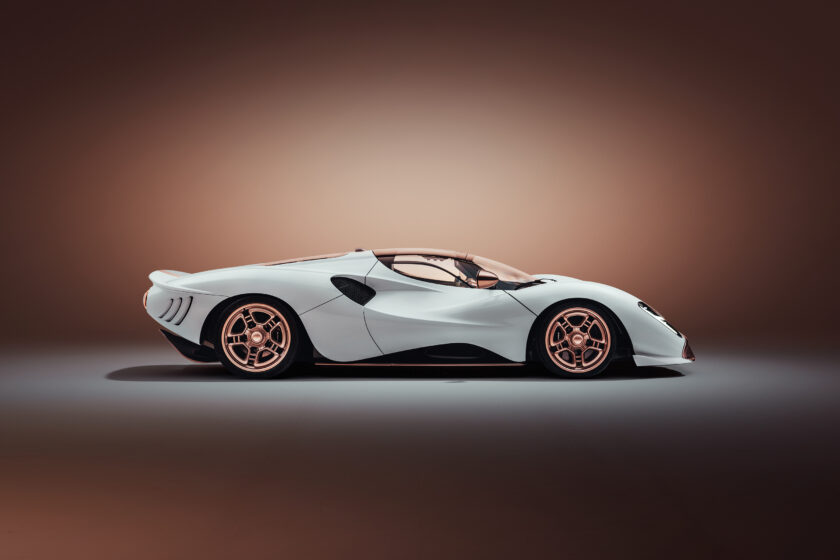
The pursuit of ultimate technical and design purity was the guiding philosophy behind the development of the P72, a process that took six years—beginning with its prototype debut at the 2019 Goodwood Festival of Speed and culminating in the launch of the final production version. Limited to just 72 units, the P72 is a contemporary celebration of retro design, echoing the spirit of the 1965 De Tomaso P70, an icon born from the collaboration between Alejandro De Tomaso and automotive legend Carroll Shelby.
This new model faithfully captures the sculpted, almost baroque curves of its predecessor—lines that evoke the elegance of 1960s race cars. These forms are wrapped around a monocoque chassis crafted from a single continuous piece of 4×4 twill carbon fiber, extending to the front and rear subframes with no glued or welded joints. This is an engineering rarity aimed at maximizing structural rigidity, reducing weight (kept under 1,500 kg), and achieving the aforementioned stylistic purity.
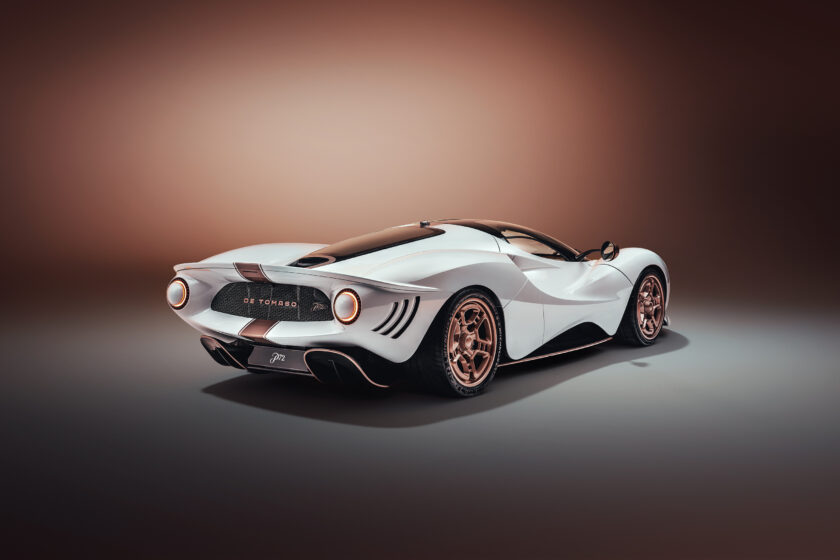
To further this objective, the entire structural architecture was developed from an all-new platform, codenamed “P”, designed to provide optimal front-to-rear weight distribution and an ultra-low center of gravity—both essential for delivering a thrilling, immersive driving experience.
Stylistic purity is mirrored by technical purity, which for De Tomaso has always meant a V8 engine. In this case, it’s a 5.0-liter Ford-derived unit, refined and supercharged by Roush Performance to deliver 700 horsepower and 818 Nm of torque. All this power is sent exclusively to the rear wheels through a six-speed manual transmission developed in-house by De Tomaso.
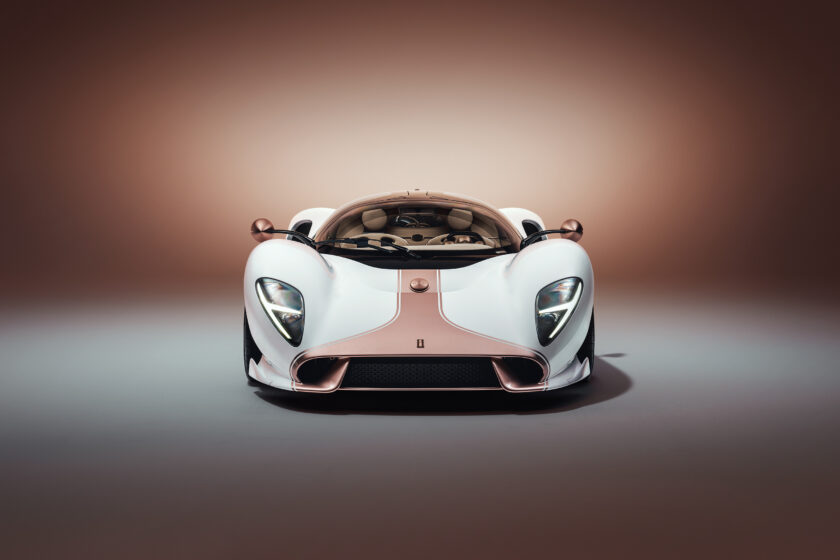
With a short gear ratio setup, the focus is on delivering a balanced, 1960s-style dynamic response rather than outright top speed—a philosophy that is further emphasized by the absence of any driving mode selectors. However, the push-rod double-wishbone suspension system features manually adjustable dampers with three settings, allowing the driver to fine-tune the Modena-born supercar to personal preference.
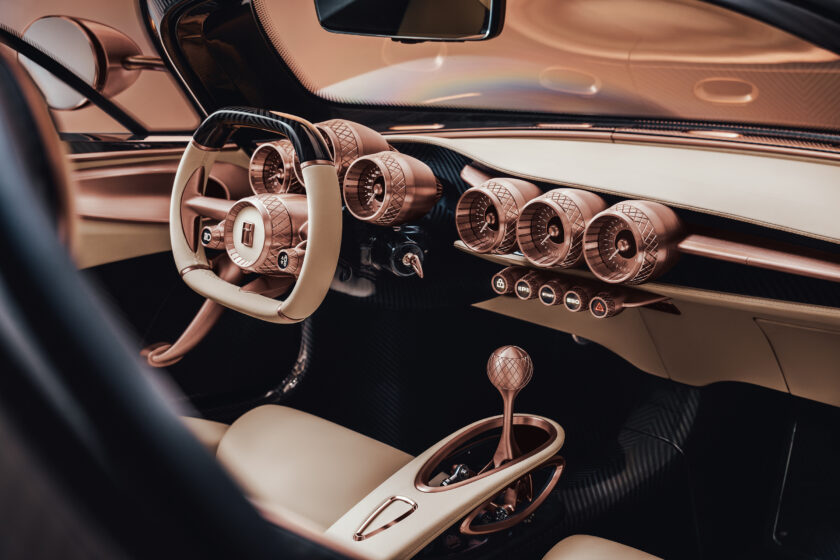
This “old-school” mechanical philosophy continues inside the cabin, where there are no digital screens or touch controls. Instead, the dashboard is centered around purely analog dials—multiple circular gauges housed in hand-machined metal—and a gear lever that rises like a mechanical sculpture, blurring the line between art and engineering. The cockpit is designed to keep the driver fully immersed in the act of driving, free from distractions, and surrounded by handcrafted luxury: leather-upholstered seats, exposed carbon fiber inserts, and aluminum components offered in sandblasted, brushed, or polished finishes.
Only the Heart Stopped Him
Carroll Shelby, co-creator of the original De Tomaso P70 that inspired today’s P72, remains one of the brightest American legends in motorsport, both as a driver and as an entrepreneur. Born in 1923, he served in World War II before starting a racing career that would see him compete successfully around the world—especially in Formula 1 and sports car racing, where he famously won the 24 Hours of Le Mans in 1959.
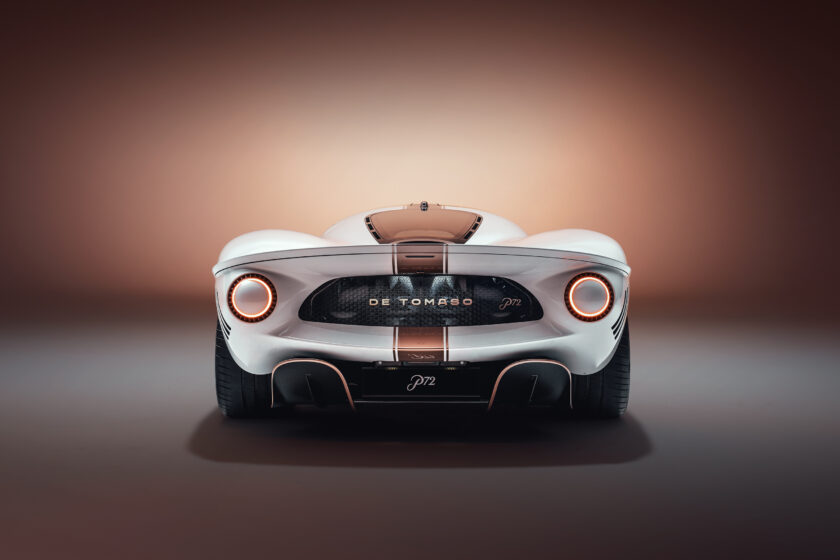
However, due to a congenital heart condition, Shelby was forced to retire from racing and shift his focus to business. In 1961, he founded Shelby American, which would go on to produce the legendary Cobra—lightweight two-seaters initially built on a British Ace chassis, outfitted with Ford’s fearsome 427 Side Oiler V8 engine producing over 500 horsepower. Produced in limited series and often tailored to specific racing or road use, these cars became fierce rivals to the Ferrari 250 GTO and Chevrolet Corvette.
Shelby’s racing success caught Ford’s attention, leading to a deeper partnership in which Shelby American became a performance atelier for Ford’s sporty models. Among these, the Shelby Mustang remains iconic, along with other creations like the Ford GT350 and GT40—the latter famously dominating the 1966 24 Hours of Le Mans by locking out the entire podium.
Title: Supercar De tomaso P72: pure tribute
Translation with ChatGPT



